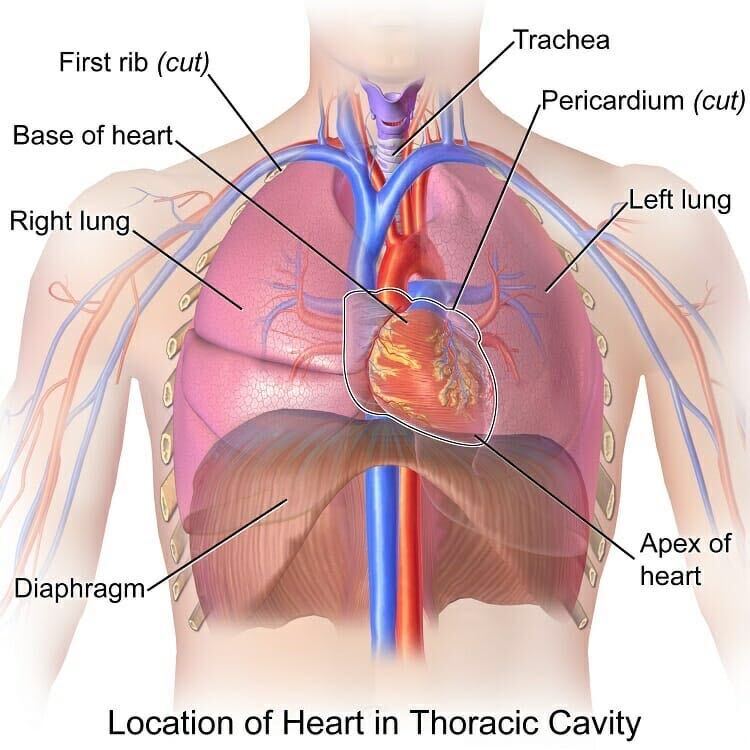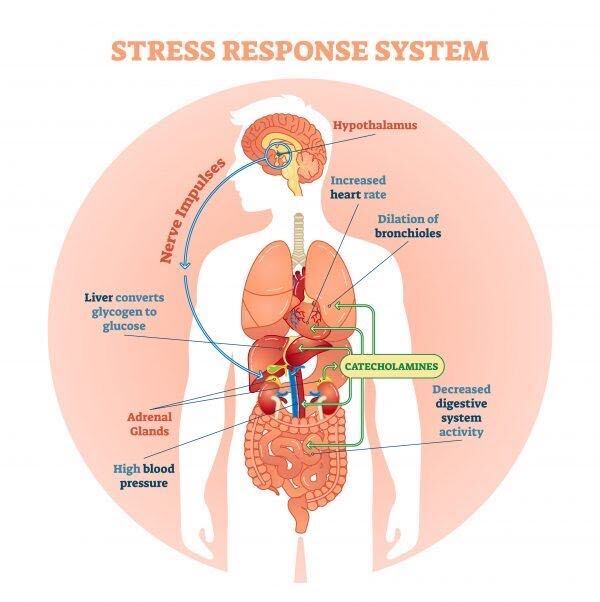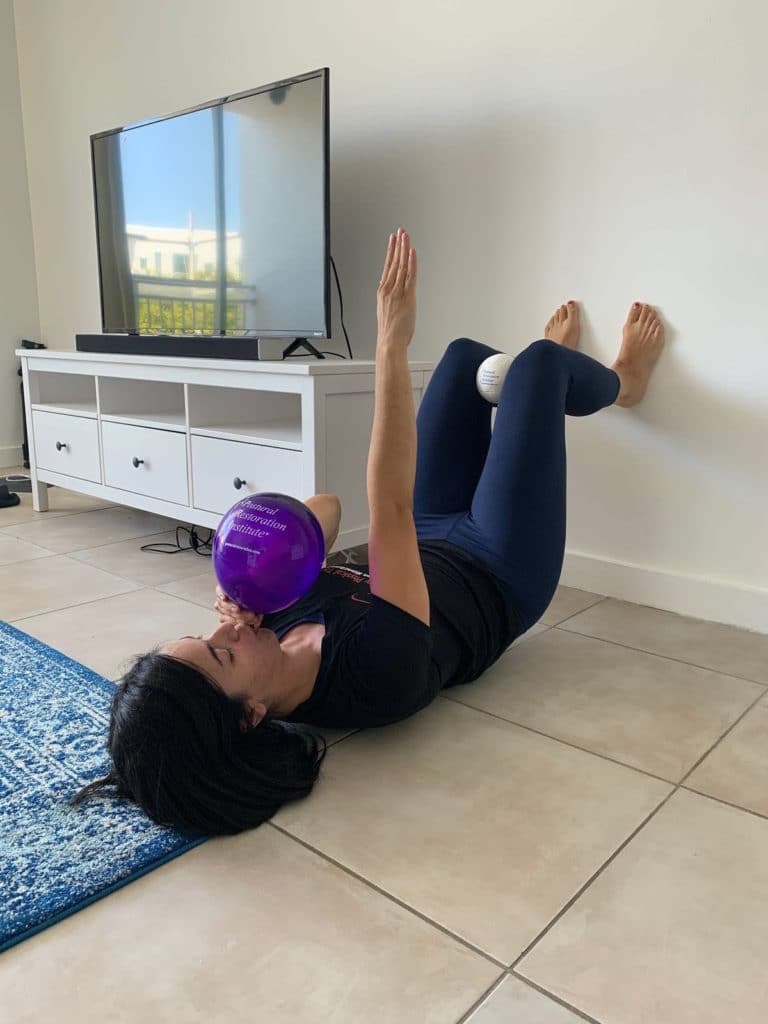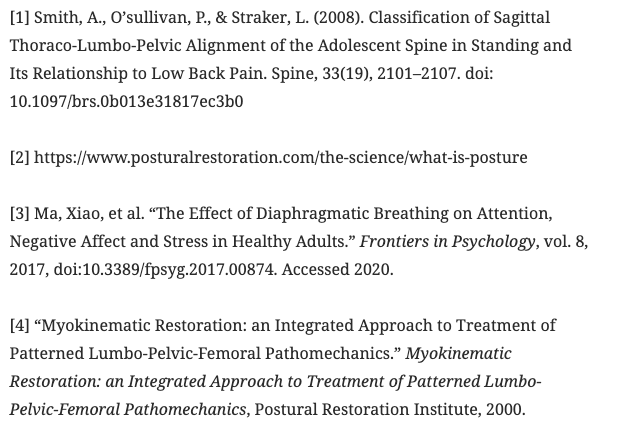Does Posture Matter?
Does Posture Matter?
Posture plays a major role in the overall well being of our bodies. In this blog I’ll introduce you to Postural Restoration® and why it can be relevant to the treatment of a wide variety of presentations, ranging from a hamstring strain to “text neck.”
Postural Restoration®
Enter the words “back pain” and “posture” into a google search and you will find a plethora of articles regarding the correlation (or lack thereof) between poor standing/sitting posture and back pain. The human body is a system. And posture determines how external forces are applied through that system. Further, postures classified as neutral are generally associated with less back pain.[1] Postural Restoration® is a movement-based neuromuscular re-training approach that investigates postural adaptations and asymmetrical patterns within the body, as well as their associated influences on corresponding muscle systems.
What does anatomy have to do with posture?
The human body is inherently asymmetrical, though it may not appear that way from the outside. After all, we have two arms, two legs, and an eyebrow to sit over each eye. However, zoom in under the surface and there is a more complex narrative to be observed. For example, the right side of our abdominal cavity holds the majority of the liver, a large and dense visceral organ. The left side of the body gets the stomach, a hollow muscular organ.
It doesn’t stop there. The heart is situated on the left side of the thoracic cavity. Because it occupies space there, the left leaflet of the diaphragm, our primary breathing muscle, is smaller. The right leaflet of the diaphragm is larger and notably stronger. And this particular asymmetry becomes especially relevant to the way humans breathe. This is because the larger and stronger right leaflet aids in pulling our trunks into right rotation. This is a keystone concept within the framework of Postural Restoration®.

Anatomical Asymmetries and Patterns of Dysfunction
These anatomical asymmetries are a normal part of the body system. In general, our bodies do a great job of balancing these asymmetries into an integrated model. A perfect example is the reciprocal pattern with which we walk. As we step forward with our right foot our left arm swings forward with it. We then rotate toward our right foot. Afterward, this process repeats on the left side—in theory.
However, sometimes these asymmetries can cause us to fall into predictable patterns of movement dysfunction, either from suboptimal use or overuse. With this knowledge, we can decrease pain and reduce risk of future injury by identifying the dysfunctional pattern. Once the pattern is identified, we can retrain the body to move through known patterns that are biomechanically more efficient. Ready to get started on your journey to having proper posture? Book a session with us today!
Restoring efficient posture with functional patterns:
What is exactly is posture? Renowned physical therapist and the founder of the Postural Restoration® Institute, Ron Hruska, MPA, PT, defines posture as a “reflection of the ‘position’ of many systems [in the body] that are regulated, determined and created through limited functional patterns. These patterns reflect our ability and inability to breathe, rotate and rest symmetrically.”[2] Limited functional patterns represent the ways our bodies adapt around various movement restrictions, whether originating from bony or soft tissue structures.

The most common limited functional pattern that physical therapists practicing postural restoration see is breathing. Do you remember earlier when I mentioned that the right leaflet of the diaphragm is larger and stronger? Well, that expected asymmetry creates a propensity to orient oneself to the right side, while the left side of the ribcage remains comparatively flared. And without reciprocal motion alternating left to right and left again, the diaphragm is less efficient in its role as our primary breathing muscle. This is because it is less likely to return fully to its domed position of rest during exhalation.
The Respiratory Diaphragm is King
Think of it this way: if you stood around all day with your elbow fully bent it would eventually cause your bicep to feel very tired. As your bicep fatigued, you would probably find various ways to position your arm to help your bicep work less. In the case of breathing, your body begins to recruit accessory breathing muscles ideally reserved for more stressful or physically exertive scenarios. The breathing pattern associated with fight-or-flight brings with it neurological and hormonal stress responses. This fight-or-flight response is desired and necessary when warranted. (For example, trying to run back to your treehouse while a lion is chasing you.) However, if triggered frequently and unnecessarily, it can affect your ability to relax, recover, think, sleep, and digest.
Because of this, restoring optimal function of the diaphragm is vital in accomplishing two major goals. It serves as a long term solution for managing stress, and is also the first step in restoring efficient neutral posture. [3]
Implementing Postural Restoration® in your Routine:
Neutral posture is a dynamic state. It allows humans to shift their center of gravity efficiently from right to left, breathing effectively with both lungs. This increases the likelihood that we use our asymmetrically balanced bodies effectively. As a result, it reduces the need to rely on dysfunctional movement patterns. Neutral posture, with efficient diaphragmatic function, is the foundation from which all other movement should begin.
Lastly, to get you started on your journey to neutral posture, here is the one Postural Restoration® exercise every single person can do to begin working towards achieving “neutral” posture and improving breathing mechanics.
90/90 Hip Lift with Right Arm Reach [4]

1. Lie on the floor with your feet on a wall and your hips and knees bent at 90° angle. Place a 6 inch ball between your knees and hold an uninflated balloon in your left hand.
2. On an exhale, perform a posterior pelvic tilt, flattening the sacrum toward the ground. Dig down into your heels, activate the hamstrings. Do this until the tailbone and sacrum begin to lift off the floor. (Your low back should remain on the floor.)
3. Pull your left hip back slightly so that your left knee is below your right knee. You should feel stronger activity in your left hamstrings and inner thigh muscles.
4. Holding this position, and raise your right arm toward the ceiling, and place the balloon in between your teeth. Breathe in through your nose. As you exhale into the balloon, reach your right arm toward the ceiling. Take care not to let your cheeks puff out as you blow into the balloon. Hold your breath at the end of your exhale for 3 seconds before you inhale again. Do not let air escape from the balloon.
5. Repeat this breathing sequence for 4-5 exhales, reaching through the right arm as you exhale, and maintaining the reach as you inhale.
6. Rest after the 4th or 5th breath. Perform 4 sets of 4-5 breaths, daily.
At Symmetry, our Doctors of Physical Therapy are able to provide a postural assessment to help you work through or prevent any unnecessary pain or injuries. To get you started, here are some tips for having an ergonomic setup and improving your posture.
Written By: Dr. Nicole Ramos, PT, DPT

